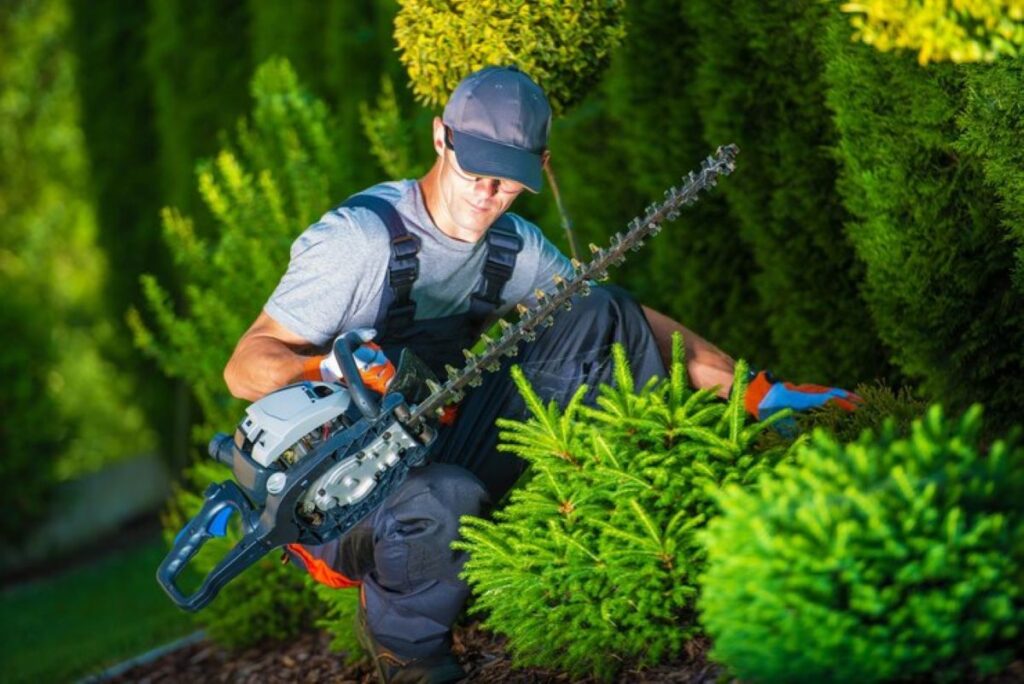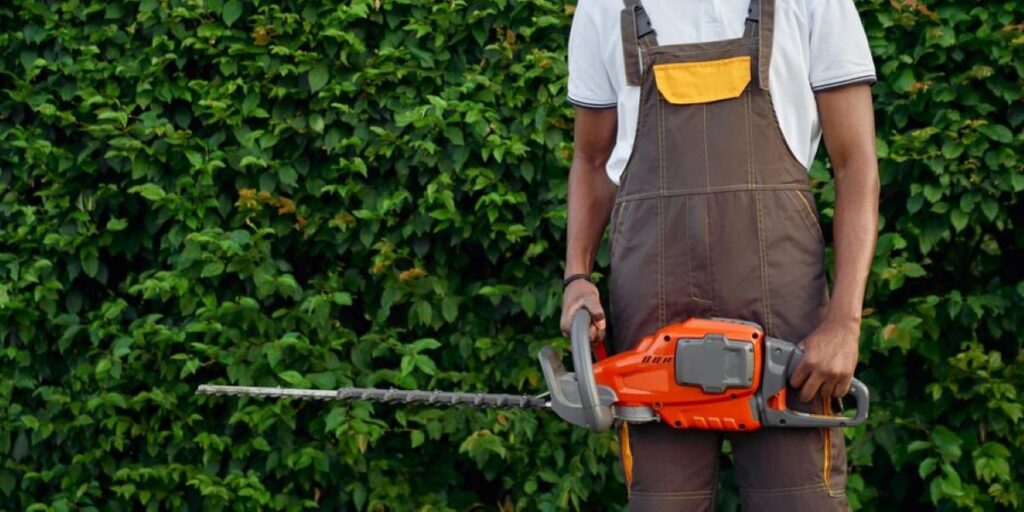Hedge trimming is an essential part of maintaining the appearance and health of your outdoor space. However, before you hire a professional to trim your hedges, it’s important to understand the factors that influence the cost of the service. By doing so, you can make an informed decision and ensure that you’re getting the best value for your money.
Understanding the Basics of Hedge Trimming
Hedge trimming involves the regular pruning and shaping of hedges to maintain their desired form and size. By removing overgrown branches and foliage, hedge trimming helps promote healthy growth and enhances the overall appearance of your landscape.
When it comes to hedge trimming, timing is crucial. The best time to trim hedges depends on the type of plants you have. For example, flowering hedges are often pruned after they bloom, while evergreen hedges can be trimmed in late winter or early spring before new growth appears. Understanding the specific needs of trimming hedges will ensure they thrive throughout the year.
The Importance of Regular Hedge Trimming
Regular hedge trimming is crucial to keep your hedges looking neat and well-maintained. It helps prevent the hedges from becoming overgrown, which can obstruct views, block sunlight, and create an untidy appearance. Trimming also promotes air circulation, reducing the risk of fungal diseases that can damage your hedges.
Moreover, regular hedge trimming can encourage denser growth, making your hedges more effective as privacy screens or windbreaks. Well-maintained hedges not only add aesthetic value to your property but also serve practical purposes in creating boundaries and defining outdoor spaces.
Different Types of Hedge Trimming Techniques
There are several techniques used in hedge trimming, depending on the desired shape and style of the hedge. Common techniques include shearing, hand pruning, and topiary. Each technique requires different skills and tools, which can affect the cost of the service.
Shearing is a popular technique for creating formal, geometric shapes, while hand pruning allows for more precise cuts, ideal for intricate designs or maintaining natural forms. Topiary, on the other hand, involves sculpting hedges into elaborate shapes or figures, adding a whimsical touch to any garden. Understanding the differences between these techniques can help you choose the best approach to achieve your desired hedge aesthetic.
Factors Influencing the Cost of Hedge Trimming
When determining the cost of hedge trimming, professionals take several factors into account. Understanding these factors can help you estimate the potential cost and make a more informed decision.
Trimming hedges is not just about maintaining their appearance; it also plays a crucial role in promoting healthy growth and longevity. Properly trimmed hedges are less prone to diseases and pest infestations, ensuring they remain vibrant and lush throughout the year.
Size and Complexity of Your Hedge
The size and complexity of your hedge play a significant role in determining the cost of trimming. Larger hedges or those with intricate designs may require more time and effort to achieve the desired result, leading to higher costs.
Additionally, the shape of the hedge can impact the cost. Hedges that need intricate shaping or precise cutting to maintain a specific design or pattern will require more skill and attention to detail, potentially increasing the overall cost of the service.
Frequency of Trimming Required
The frequency at which your hedges need to be trimmed can also impact the overall cost. Hedges that require more frequent trimming, such as fast-growing varieties, may need to be trimmed multiple times a year to keep them in shape. This increased frequency of maintenance visits can lead to higher costs over time.
Equipment and Tools Used
The type of equipment and tools needed to trim your hedges can also affect the cost. Some hedges may require specialized equipment, such as powered trimmers or scaffolding, which can increase the overall cost of the service.
Furthermore, the quality of the tools used can impact the outcome of the trimming. Sharp and well-maintained tools not only ensure a clean and precise cut but also contribute to the overall health of the hedge. Professionals invest in high-quality tools to deliver superior results, which may be reflected in the cost of the service.
Average Cost of Professional Hedge Trimming Services
Professional hedge trimming services can be offered at either an hourly rate or a flat rate. Understanding the pros and cons of each pricing structure can help you choose the most suitable option for your needs.
When considering professional hedge trimming services, it’s important to note that the average cost can vary depending on factors such as the size of your hedges, their current condition, and the level of expertise required. Larger, more intricate hedges may require specialized equipment or techniques, which could impact the overall cost of the service.

Hourly Rates vs Flat Rates
Hourly rates are typically charged for smaller hedge trimming jobs or maintenance visits. This pricing structure is beneficial if you have multiple small hedges or if you’re looking for a one-time trimming service. On the other hand, flat rates are often offered for larger hedge trimming projects or ongoing maintenance contracts. Flat rates provide more certainty about the total cost but may not be as cost-effective for small-scale jobs.
It’s worth noting that some professional hedge trimming services may offer a combination of hourly and flat rates, depending on the specific requirements of the job. This hybrid pricing model can provide flexibility for clients with varying needs and budget constraints.
Additional Costs to Consider
In addition to the base cost of hedge trimming, there may be additional expenses to consider. For example, if your hedges require extensive pruning, there might be extra charges for waste disposal. Similarly, if your hedges are located in a hard-to-reach area, such as a sloped terrain or near power lines, additional safety measures may need to be taken, which can increase the overall cost.
Furthermore, some professional hedge trimming services may offer add-on services such as fertilization, pest control, or shaping for an additional fee. These supplementary services can help enhance the health and appearance of your hedges, but it’s essential to factor in these costs when budgeting for your hedge maintenance.
DIY Hedge Trimming: Pros and Cons
While hiring a professional hedge trimming service offers convenience and expertise, some homeowners prefer to tackle the task themselves. However, it’s important to weigh the pros and cons before embarking on a DIY hedge trimming project.
Before diving into a DIY hedge trimming project, it’s essential to understand the intricacies of hedge growth and the specific needs of different hedge species. Researching the best time of year to trim your hedges, the proper techniques for shaping them, and the tools required for the job can make a significant difference in the outcome. Taking the time to educate yourself on these aspects can enhance the success of your DIY trimming efforts.
Potential Savings from DIY Trimming
One of the main advantages of DIY hedge trimming is the potential savings. By investing in the necessary tools and dedicating your time, you can avoid paying for professional services. DIY trimming also gives you complete control over the process, allowing you to achieve the desired results.
Furthermore, the sense of satisfaction that comes from transforming your overgrown hedges into neatly trimmed boundaries or ornamental shapes can be immensely rewarding. Engaging in the physical activity of hedge trimming can also serve as a form of exercise and stress relief, providing both mental and physical benefits beyond just the aesthetic improvement of your property.
Risks and Challenges of DIY Trimming
While DIY trimming may seem cost-effective, it comes with certain risks and challenges. Improper trimming techniques can harm the health of your hedges or result in an uneven appearance. Additionally, working with sharp tools and reaching tall hedges can be dangerous if proper safety precautions are not followed. It’s also worth considering the time and effort required to complete the job, especially for larger hedges.
Moreover, each hedge species has its own growth patterns and requirements, and a one-size-fits-all approach to trimming may not be suitable. Understanding the specific needs of your hedges, such as the ideal pruning frequency and the amount of foliage that can be safely removed, is crucial to maintaining their health and promoting vigorous growth. Without this knowledge, DIY trimming efforts may inadvertently harm your hedges rather than enhancing their appearance.

Tips for Hiring a Hedge Trimming Service
If you decide to hire a professional hedge trimming service, it’s crucial to choose a reliable and experienced provider. Consider the following tips to ensure a smooth and satisfactory experience:
Checking Credentials and Reviews
Before hiring a hedge trimming service, inquire about their qualifications and experience. Ask for references or check online reviews to gauge their reputation and quality of work. Additionally, ensure that the service provider is licensed and insured to protect yourself from any liability.
Understanding the Service Contract
It’s essential to read and understand the service contract before agreeing to any terms. Make sure that the contract includes a detailed scope of work, pricing structure, and any additional charges or terms and conditions. If necessary, seek clarification or negotiate specific requirements.
Negotiating the Price
While cost should not be the sole deciding factor, it’s acceptable to negotiate the price within reason. Some providers may be open to offering discounts for ongoing maintenance contracts or bundling services. However, remember that quality and reliability should be prioritized over price alone.
When it comes to hiring a hedge trimming service, there are a few additional factors to consider. Firstly, inquire about the type of equipment and tools the service provider uses. A professional hedge trimming service should have access to a range of high-quality tools, such as hedge trimmers, pruning shears, and ladders, to ensure efficient and precise trimming. Additionally, ask about their approach to waste disposal. A reputable service will have a plan in place to remove and dispose of the trimmed branches and leaves, leaving your property clean and tidy.
Another important aspect to discuss with the service provider is their availability and scheduling. Determine whether they can accommodate your preferred timeline for the hedge trimming. It’s also worth considering if they offer regular maintenance services, as this can save you time and effort in the long run. Having a professional regularly maintain your hedges can help keep them healthy and aesthetically pleasing throughout the year.
In conclusion, the cost of hedge trimming depends on various factors such as the size and complexity of your hedges, frequency of trimming required, and the tools and equipment used. Understanding these factors allows you to make an informed decision and ensure that you’re getting the best value for your money. Whether you choose to hire a professional or take on the task yourself, maintaining regular hedge trimming is essential for a well-groomed outdoor space.
More To Read: Best Time to Trim Hedges: Expert Tips for Perfect Results
